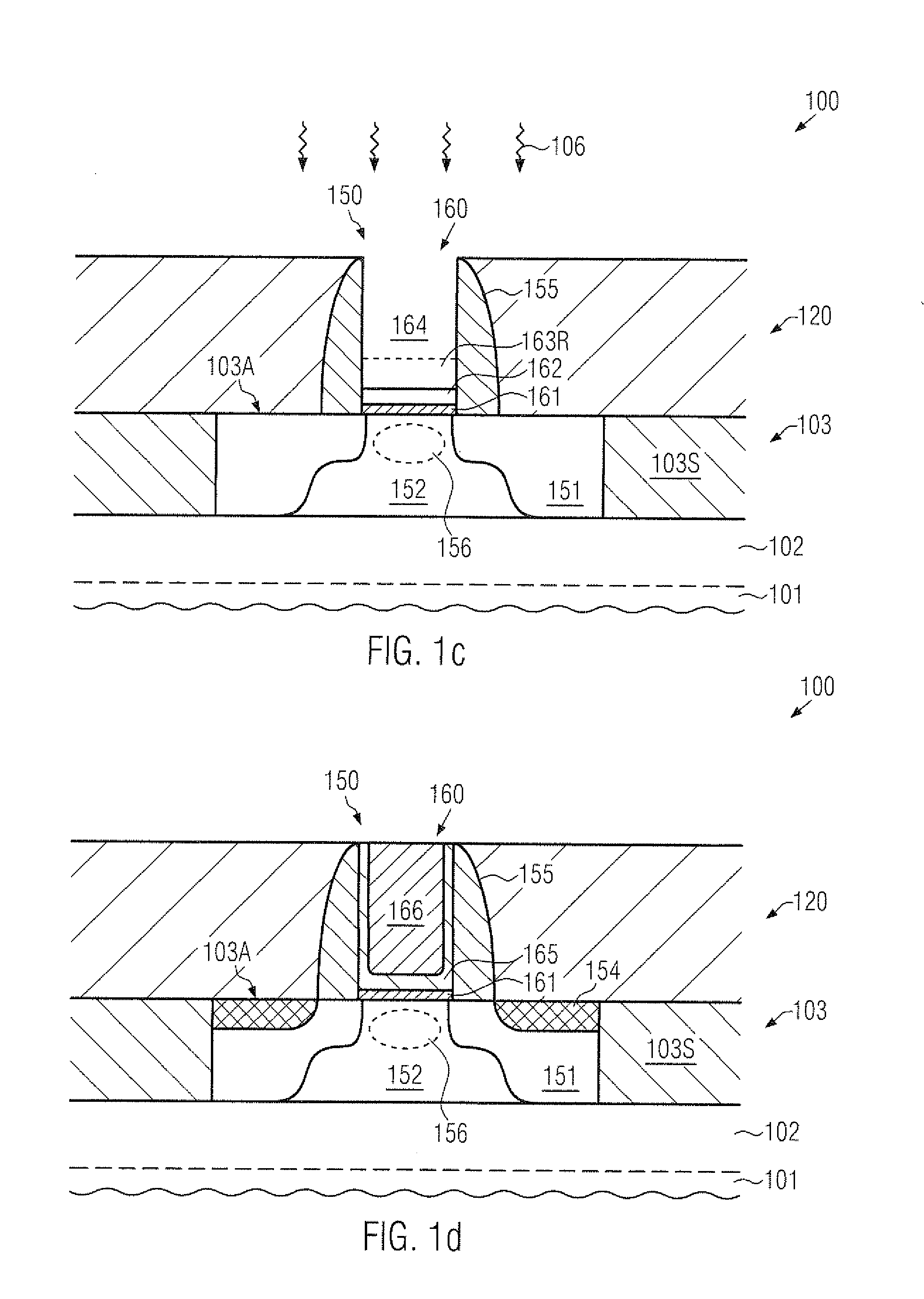A key issue in developing integrated circuits of increased packing density and enhanced performance is the scaling of transistor elements, such as MOS transistor elements, to increase the number of transistor elements in order to enhance performance of modern CPUs and the like with respect to
operating speed and functionality.
Although the reduction of the
gate length is necessary for obtaining smaller and faster transistor elements, it turns out, however, that a plurality of issues are additionally involved to maintain proper transistor performance for a reduced
gate length.
For example, so-called short channel effects may occur for highly scaled transistor elements, resulting in a reduced
controllability of the channel region, which may result in increased leakage currents and generally in degraded transistor performance.
One challenging task in this respect is, therefore, the provision of appropriately designed junction regions in the form of shallow junctions, at least at the area in the vicinity of the channel region, i.e., source and drain extension regions, which nevertheless exhibit a moderately
high conductivity so as to maintain the resistivity in conducting charge carriers from the channel to a respective contact area of the drain and source regions at a relatively low level, while the parasitic drain / source
capacitance and the
electric field are also to be taken into consideration.
The introduction of a high
dose of dopants into a crystalline substrate area, however, generates heavy damage in the
crystal structure and, therefore, one or more anneal cycles are typically required for activating the dopants, i.e., for placing the dopants at
crystal sites, and to cure the heavy
crystal damage.
However, the electrically effective
dopant concentration is limited by the ability of the anneal cycles to electrically activate the dopants.
Moreover, besides the
dopant activation and the curing of crystal damage,
dopant diffusion may also occur during the annealing, which may lead to a “blurring” of the dopant profile.
However, the reduction of the
threshold voltage, which may be typically accomplished by appropriately
doping the well region of the transistor, in combination with sophisticated halo implantation processes, which are designed to provide the appropriate dopant gradient at the PN junctions and for the overall
conductivity of the channel region, may also affect the static leakage currents of the transistors.
That is, by lowering the threshold
voltage, typically, the off current of the transistors may increase, thereby contributing to the overall
power consumption of an
integrated circuit, which may comprise millions of corresponding transistor elements.
In addition to increased leakage currents caused by extremely thin
gate dielectric materials, the static
power consumption may result in unacceptable high
power consumption, which may not be compatible with the heat dissipation capabilities of integrated circuits designed for general purposes.
For instance, the different transistor characteristics may result in devices differing in gate leakage, off-current, threshold voltage and the like.
The different well dopant profiles, however, may also have a negative effect on the transistors, since, for instance, each version of the basically same transistor configuration may have implemented therein a different dopant concentration, which may thus result in a difference in the
body resistance.
That is, the
semiconductor region positioned between the drain and source regions and below the actual channel region has received a different dopant concentration for the different transistor versions, which may negatively affect device operation.
In particular, SOI transistors may suffer from reduced transistor performance, since the deep drain and source areas may not efficiently connect to the buried insulating layer due to the presence of the well dopant species.
Upon further reducing the overall drain and source dopant concentration due to further device scaling, this undesired effect may be even further pronounced, as the well dopant concentration may not be reduced in order to obtain the desired threshold voltage characteristics.
Consequently, providing a plurality of different flavors or versions of transistors of basically the same configuration may become increasingly difficult in highly scaled
semiconductor devices, in particular if sophisticated circuit designs may demand an even further increased number of different transistor flavors.
 Login to View More
Login to View More  Login to View More
Login to View More 


